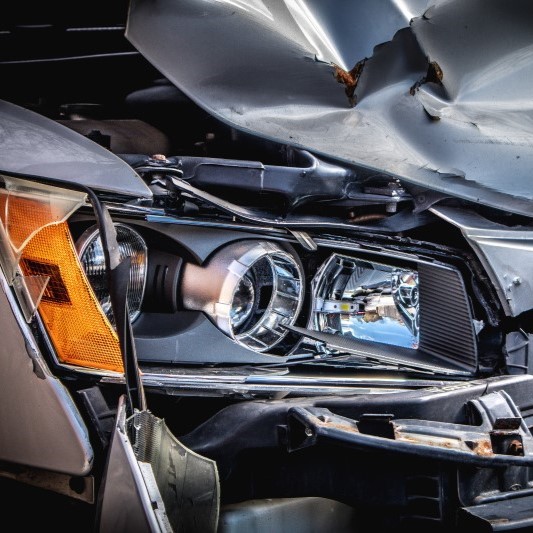

Measuring instruments of LTT in use in crash tests - on the trail of structure-borne noise
In the future, sensors for controlling airbags will react even more sensitively and electronics will decide even more quickly whether to activate restraint systems such as airbags and seatbelt pretensioners. Continental's crash specialists are breaking new ground here.
By measuring the characteristic structure-borne sound that occurs during a crash, the plastic deformation of the structure is recorded. At the same time, different crash scenarios such as high or low speed, partial vehicle overlap, oblique impact or impact against deformable objects can be distinguished very well.
This solution is called "Crash Impact Sound Sensing" (short: "CISS"). CISS is an ideal complement to the acceleration and pressure sensors previously used in crash applications.

This is because the combined evaluation of the two physical effects "deceleration" and "structure-borne sound" very reliably distinguishes vehicle accidents from misuse situations in which the restraint systems may not be activated. This new technology is also excellent at distinguishing between no-fire crashes at low speeds, such as parking bumps, and fire crashes at high vehicle speeds.
Structure-borne sound is generated when force changes are introduced into a mechanical structure. This includes, for example, the deformation of materials above the elastic range, folding buckling, collapsing and breaking of structures, and cracking. Structure-borne sound propagates as an elastic stress wave - depending on the frequency - at very high speeds of up to 5 m/ms in the structure, so that a structure-borne sound sensor integrated in the central airbag control unit can very quickly and precisely detect crash scenarios even at peripheral points of the vehicle.
In a research cooperation between Continental, Audi AG and the Institute for Applied Research (IAF) at Ingolstadt University of Applied Sciences, the structure-borne sound occurring in a vehicle crash is being investigated as part of several research projects, including funding from the German Federal Ministry of Education and Research. Among other things, characteristic structure-borne sound values - such as the potential sound energy density - are determined for specific materials and body parts by testing material samples from the deformation areas of the vehicle.
The characteristic values obtained in this way are then used to evaluate the signals occurring in a real crash test. In a further test scenario, so-called dynamic and static misuse situations (e.g. extreme driving situations, hammer blows, kicks) are evaluated in order to reliably distinguish them from a real crash. For these investigations, a powerful measurement data acquisition system is needed that meets the particularly high requirements: For example, the system must be able to operate autonomously, i.e. without computer support, while also enabling longer recordings up to the minute range - like the LTTsmart. It should also offer a high signal bandwidth of up to 1.5 MHz for as many channels as possible, and this with the highest possible accuracy. Last-not-least: The system has to be "crash-proof", i.e. able to withstand accelerations of more than 70g during operation, then the robust LTT24 is available.
At Continental, the choice fell on the transient recorder from Labortechnik Tasler. This offers 16 analog differential inputs with a bandwidth of 1.8 MHz and 24 bit resolution.
The device has proven itself both in stationary test bench operation and in mobile "crash use".
Incidentally, the investigation of structure-borne sound emissions is not only relevant for the development of crash sensors. For example, so-called "Acoustic Emission" sensors (AE sensors) are used in process, tool and machine monitoring in clamping, separating and forming production. Another conceivable application is the non-destructive testing of components subject to high mechanical loads, such as pressure vessels and piping systems. LTT's transient recorders are ideally suited for connecting AE sensors and accurately cover their operating range with typical bandwidths from 50 kHz to 1000 kHz. With their 8 or 16 differential analog inputs, several AE sensor signals can be acquired simultaneously and recorded and evaluated together with other machine parameters. Connection to the computer is optionally via Ethernet, USB or SCSI.
LTTpro is an intuitive software for controlling the acquisition and visualizing the measurement data with integrated online mathematics. The acquired measurement signals can be saved directly in the desired data format - DIAdem, Famos, µGraph or LTT format. Exporting the measurement data is thus unnecessary. Other file formats such as Matlab, Dasylab and ASCII are offered as export formats.
Back